While the world today is expanding beyond traditional frameworks, and various kinds of networks are growing, it is being shaken to its foundations by challenges such as conflict, refugees and immigration, and the emergence of protectionism, xenophobia, and populism. At the same time, the world is awash in data far exceeding the processing capacity of human beings, and in an increasingly complex and sophisticated environment where communication tools such as social media are developing rapidly, people appear to be banding together into small, disparate groups of “island universe” and communities. Also, there is increasingly assertive activity by a wide range of small-scale organizations that challenge the dictates of superpowers and centralized political systems.
Against this backdrop of widespread disruption of conventional social frameworks and values, Yokohama Triennale 2017 embarks on a multi-faceted examination, through art, of the themes of connectivity and isolation, under the title “Islands, Constellations & Galapagos.” We will contemplate the world in which conflicting concepts and phenomena are intricately intertwined and constantly in flux, the nature of identity and diversity, and how the imagination and creativity of human beings can be used to derive a new vision and ground design for the future when our future remains uncertain. At the main venues ‒ Yokohama Museum of Art, Yokohama Red Brick Warehouse No. 1, and Yokohama Port Opening Memorial Hall ‒ works in diverse media by approximately 40 artists or groups from Japan and the world will be exhibited. It will resemble an aggregation of small solo exhibitions by a tightly selected number of artists, with many of them showing multiple works. This is intended to give the viewers a deeper understanding of individual artistsʼ creative worlds, and at the same time, to embody the image of these worlds gradually connecting like stars or islands forming constellations and archipelagoes.
Participants include artists who consistently address issues with their own unique methods, and carry out activities that transcend existing frameworks and concepts, as well as collaborations among artists and projects that address pressing social issues from an artistic point of view. The themes dealt in their works are broad: some refer to the individual and society, the self and other, and states and national borders, utopia, and others question different historical views, human activities, and civilizations as well as specifically Japanese issues of isolation.
In the planning and conceptualizing stages, the Triennale has deepened the concept from various angles through a Conception Meeting that includes experts from different fields. Also, we are organizing the Yokohama Round, a series of dialogues also featuring experts from various fields, as a platform for discussions and sharing, and exploring ideas through both visual examination and dialogue. In addition, we will collaborate with the local educational institutions such as the Yokohama Graduate School of Architecture “Y-GSA”, Yokohama National University and highlight historical sites in the city, seeking to approach the historical background of the opening of the port and the nation as a whole from multifaceted and locally grounded perspectives. While understanding how this present world came to be and where it stands at this moment, we hope that the Yokohama Triennale 2017 will encourage visitors to think about connecting todayʼs memory to the future generations and ways of realizing co-existence in our society.
MIKI Akiko
Co-director(Artistic)
Yokohama Triennale 2017
Curator / International Artistic Director, Benesse Art Site Naoshima

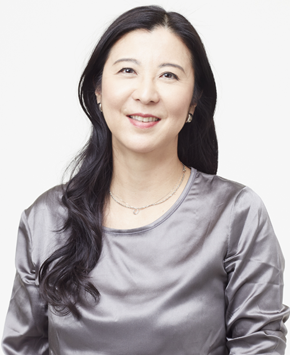
We now open the sixth edition of Yokohama Triennale, which was inaugurated in 2001.
In the last 16 years, we have seen a growth in the number of biennales and triennales, which have become a frequently-organized event in different places in and out of Japan; a flourishing landscape that could scarcely have been imagined when the first Yokohama Triennale was held in 2001. This year, the Venice Biennale and documenta will take place along with Skulptur Projekte Münster that occurs every 10 years. In Japan, in addition to Sapporo and Ichihara, the Japan Alps, Oku Noto, and Tanegashima are newly established.
Each of these international exhibitions and festivals are different in their history and size, therefore, not easily comparable. Yet given their rise in the number, since the fourth edition in 2011, we have given due consideration to the fact that Yokohama Museum of Art is the primary venue and the history of Yokohama overlaps with the Japanese modernization, in order to be unique and engage ourselves with communities in and outside of Japan.
We believe that biennales and triennales can provide opportunities to engage closely with the new expressions presented by the contemporary artists, foster multifaceted perspectives, and fathom thoughts on the world and people. Today, when conflicts are frequent and introversion is rampant, the inherent qualities of contemporary art including creativity, imagination, and the multiple perspectives, can be a guiding star in order for us to survive this convoluted world.
In preparing for this edition, we have taken a unique approach of inviting experts from different fields, including philosophy, math, anatomy, and sociology, among others for dialogues and discussions. In addition to the exhibition, we have various programs, including Yokohama Round, Yokohama Sites, Yokohama Program, Yokohama Screening all that connect various activities and practices, including hands-on workshops, walks, performances, film, among others.
We hope to seek new possibilities by connecting things that are different and isolate, through dialog, contemplation and imagination. We hope that through Yokohama Triennale 2017, we will see people opening up their wings of imagination and attaining fecundity that multiple perspectives offer us.
OSAKA Eriko
Co-director
Yokohama Triennale 2017
Director, Yokohama Museum of Art

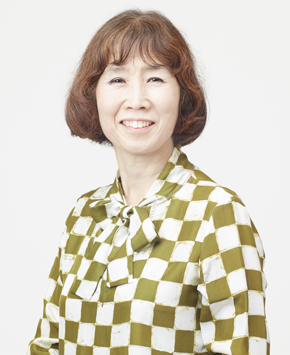
2017 marks the 150th year since the return of political power to the Emperor in 1867, which signified the collapse of the feudal system and the beginning of Japan’s drastic modernization. With the restoration of Imperial sovereignty, Japan ceased to be a nation ruled by samurai, and the new Meiji Period (1868-1912) of rapid change began. One major factor contributing to this change was the opening of Japan’s ports to overseas trade during the Ansei Era (1854-1860), after over centuries of enforced seclusion. The village of Yokohama, which had been no more than an impoverished hamlet during the Edo Period (1603-1868), was one of the new trading ports that opened in 1859, and its infrastructure rapidly developed. Inevitably, as a new international crossroads of trade, people, and culture, Yokohama became one of the cities leading Japan on its dramatic march away from Galapagos-like isolation, toward connectivity with the world, and eventually to modernization.
This edition of the Yokohama Triennale aims to examine the diverse issues we face today in a multidisciplinary fashion, drawing ideas from various perspectives closely tied to the overall theme, including “connectivity” and “isolation.” One aspect of this will be a conscious focus on the historical background of Yokohama, which may seem at first glance to be unrelated to contemporary art. The selection as venues of historic buildings in the city that symbolize Japan’s modernization, and the inclusion of artists that address Yokohama’s historical record and topography, is also based on that viewpoint, as is our identification and introduction of several historical sites and facilities near the venue that seem to resonate deeply with the theme of this Triennale.
KASHIWAGI Tomoh
Co-director
Yokohama Triennale 2017
Project Director, Yokohama Museum of Art

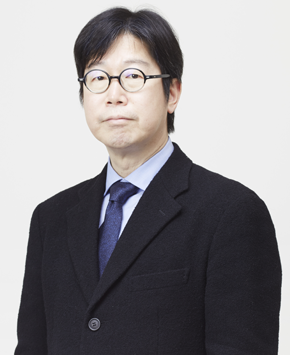
Conception meeting members consisting of experts from various fields were convened to deeper the concept and decide on the title of Yokohama Triennale through discussions that transcend the barriers of existing ideological frameworks and specializations.

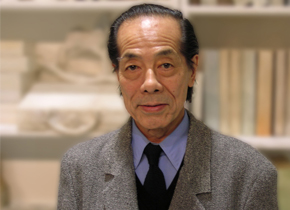
TAKASHINA Shuji
Art Historian / Director, Ohara Museum of Art / Professor Emeritus, The University of Tokyo

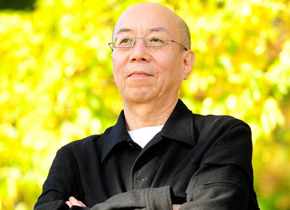
WASHIDA Kiyokazu
Philosopher / President, Kyoto City University of Arts / Director, sendai mediatheque
In the Yokohama Lounge, viewers can take a break during the exhibition to unwind, and also engage with information and ideas that served as inspiration when working out the Triennale’s themes and concepts, as well as statements and proposals from the Conception Meeting members. These diverse “materials” may appear on the surface unrelated to the Triennale’s theme, but we believe individual viewers will connect them via their own unique ideas and viewpoints, and embark on mental journeys with limitless possibilities by exploring their relation to the exhibited works.
Yokohama Triennale 2017’s theme and main keywords are connectivity, isolation, co-existence, and diversity. We refer to facilities implementing projects and exhibitions linked to these keywords, and places and buildings with historical backgrounds as “Yokohama Sites,” which are introduced here. Meanwhile, the artist Tamura Yuichiro combines several sites like stars and creates Constellation γ(Gamma), a narrative with a unique viewpoint. Visitors can view the story Tamura has woven in the former third-class dining hall of the ship NYK Hikawamaru moored in Yamashita Park. More detail here
Yokohama Round invites experts from various fields for a roundtable discussion, conducting several rounds of dialogues and discussions. It kicked off in January 2017 prior to the opening of the Yokohama Triennale and will conclude at the closing of the Yokohama Triennale 2017.
(As of April 18, 2017/ Dates, themes and speakers may be subject to change.)
| Date | Theme | Speakers[General Facilitator: MIKI Akiko] |
| Round 1 January 15 |
Art Between 0 and 1 What is the significance of art in a contemporary society increasingly reduced to a digital world of 0 and 1? |
YORO Takeshi Anatomist / Professor Emeritus, The University of Tokyo FUSE Hideto Art Critic / Anatomist |
| Round 2 March 25 |
Creation and Contamination Focusing on different cultures and languages, intersecting value systems, and contamination, and reexamining the issues as well as the new creative possibilities that emerge in the contemporary landscape of rising conservatism. |
Rirkrit TIRAVANIJA Artist / Professor, Columbia University School of the Arts IMAFUKU Ryuta Cultural Anthropologist / Critic / Professor, the Graduate School of Global Studies, Tokyo University of Foreign Studies Sputniko! Artist / MIT Media Lab Assistant Professor |
| Round 3 May 28 |
Islands and Alternatives: Art, Medicine, History and Society With “island” as a keyword, the speakers explore alternative possibilities diverging from traditional value systems and world views from a broad perspective. |
MAP Office Artist INABA Toshiro Medical Doctor / Assistant Professor, Cardiovascular Internal Medicine Department, Tokyo University Hospital YOSHIMI Shunya Scholar of Sociology, Cultural Studies and Media Studies / Professor, Interfaculty Initiative in Information Studies, The University of Tokyo |
| Round 4 August 4-5 |
The Connected World and the Isolated World Exploring the views and works of artists who poetically and critically decode the connectivity and isolation of the current 21st-century world. |
Approximately 20 participating artists |
| Round 5 August 26 |
Galapagos Considered From the standpoint of autonomous life that persists while changing and adapting to its environment, what new possibilities can be seen when we examine nature, society, the Internet, the economy, and community? |
Dominick CHEN Media Design Theorist /Associate Professor, Faculty of Letters, Arts and Sciences, Waseda University HASEGAWA Mariko Human Behavioral Ecologist / Physical Anthropologist / Executive Director & Professor, The Graduate University for the Advanced Studies KAWAKUBO Yoi Artist |
| Round 6 September 18 |
New Public Space and Art Based on the theme of isolation and connectivity, the speakers will discuss how the public spaces are changing and what are the relationships between the urban structure, architecture and art. *Co-organized by Yokohama Graduate School of Architecture (Y-GSA), Yokohama National University |
KITAYAMA Koh Architect / Emeritus Professor, Yokohama National University NAITO Hiroshi Architect / Emeritus Professor, The University of Tokyo NISHIZAWA Ryue Architect / Professor, Yokohama Graduate School of Architecture (Y-GSA), Yokohama National University KOBAYASHI Shigenori Researcher of Urban Planning / Emeritus Professor, Yokohama National University |
| Round 7 October 21 |
Where Do We Come From? Where Are We Going? An examination of the imaginative and expressive actions we take to explore the lives we live, here and now, and from now into future, in relation to the vast time and space. |
HATAKEYAMA Naoya Photographer HIRANO Keiichiro Novelist KOBAYASHI Kensei Astrobiologist /Professor, Graduate School and Faculty of Engineering, Yokohama National University |
| Round 8 November 3 |
Aspiring to Find More Beautiful Constellations: What Is the Potential of Art? In a world where the future remains unclear, can art connect things that are invisible, turn perspectives around or enable thoughts to take a leap into a different level for envisioning or designing the future? |
Concept Meeting Members + Yokohama Triennale 2017 Directors |
Approximately 20 titles related to the exhibition theme and documentaries related to participating artists will be shown over the course of four days.To the event program top
In collaboration with Tsurumi University, classic texts and maps from the university will be exhibited, reading “isolation” and “connectivity” in rare manuscripts from the Tsurumi University Library. Meanwhile, A play by Suizokukan Gekijou set in Yokohama will be performed in an enormous tent theater suddenly appearing in the midst of the city. They set up a tent like a phantom island in the heart of one of Japan’s largest day-laborer communities, Kotobuki-cho, where the population is aging and increasingly isolated. To the event program top

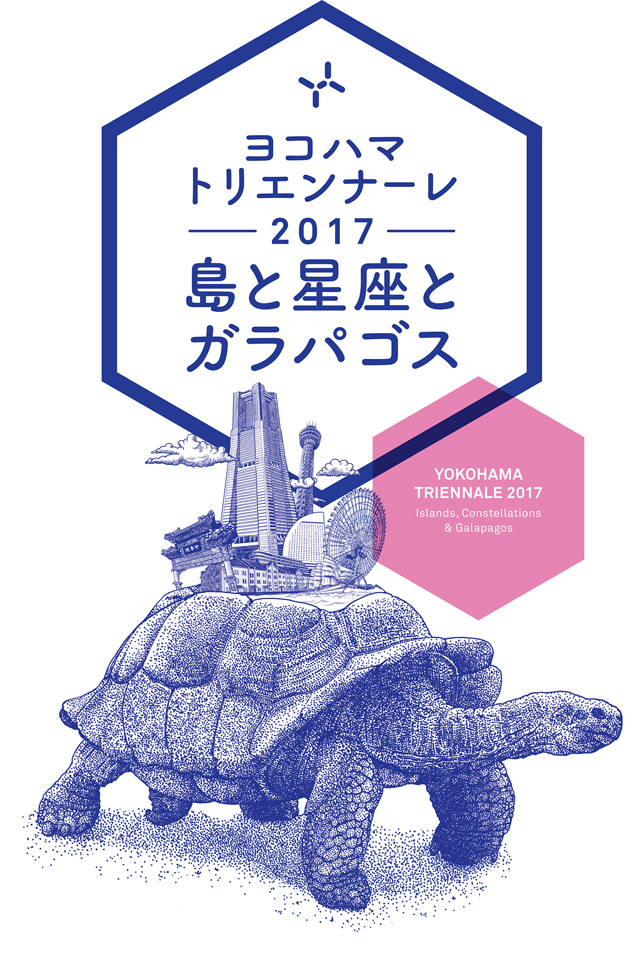
Inspired by the World Turtle depicted in Hindu mythology, this image visual sets the cityscape of Yokohama on top of the Galapagos tortoise, and combines the Japanese traditional pattern of Kikkomon, or tortoiseshell.
This image visual is designed by PARTY, a Creative Lab with a focus on experimenting with design that utilizes technology, catering to the 'networked' world and the 'maker' culture. With offices in Tokyo and New York, they engage in various design projects from around the globe, ranging from brand communication, product, service, content; to event, and space design. They also invest their energies into research and development, building their own product prototypes.
Masashi Kawamura is the Executive Creative Director & Co-Founder of the creative Lab PARTY in Tokyo & New York. In addition to creating global campaigns for numerous brands, he explores creativity in a variety of fields beyond advertising, including TV programs and music videos. He has been chosen as one of the Creativity magazine’s "Creative 50," Fast Company’s “100 most creative people in business,” and AERA magazine’s "100 people breaking out of Japan."
Eiji Muroichi is a Visual Designer and Design Technologist who pursues a hybrid visual expression across multiple skills of Visual Design, 3DCG, Motion Graphics and Creative Codings. His career began in Japan and he worked for various global brands and won many international awards. He later moved to San Francisco to take the role as Art Director at AKQA, then joined the Creative Lab PARTY New York from 2014 as Design Director.